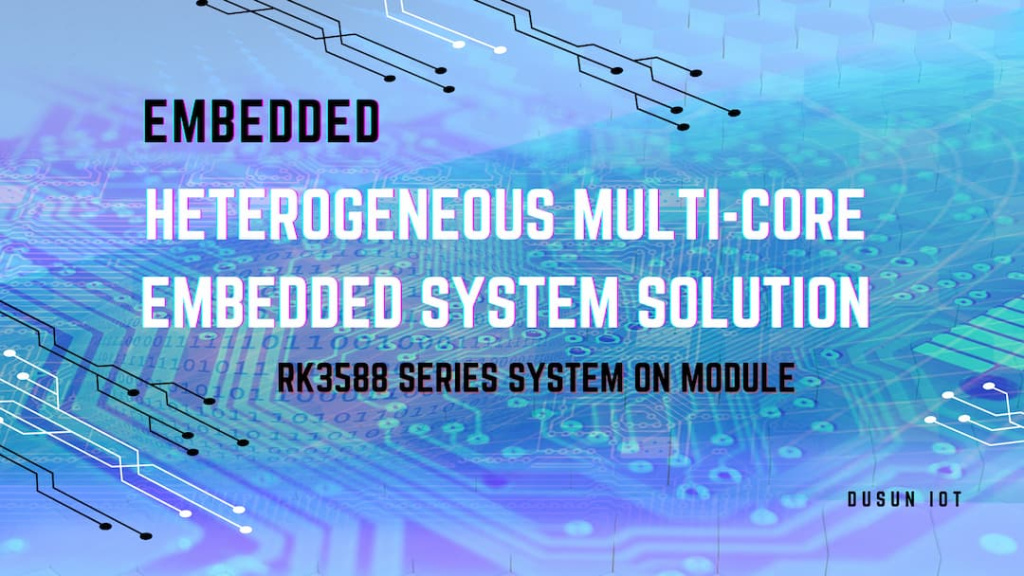The rapid advancement of embedded artificial intelligence has significantly increased demand for high-performance computing. To strike a balance between performance and power efficiency, and to accelerate computation through parallel processing, more embedded processors are now employing homogenous multicore, heterogeneous multicore, and coprocessor architectures. There is particularly strong demand within industrial intelligent systems for hybrid critical systems based on intelligent chips. These systems represent a critical future direction for embedded system technology with prominent applications already seen in autonomous driving, robots, automotive electronics, and showing positive growth trends in industry and defense sectors.
Understanding Heterogeneous Multicore
Heterogeneous multicore refers to a single SOC (System on Chip) that houses multiple core types, each differing in architecture and instruction set. For example, some cores might be tailored for peak performance tasks, while others might be optimized for energy efficiency. This design strategy effectively balances performance with power consumption but complicates programming as task distribution across diverse cores must be considered.
Benefits of Heterogeneous Multicore SoC Processors
Compared to single-core processors, heterogeneous multicore SoC processors bring a wealth of benefits including improved performance, cost efficiency, lower power consumption, and compact design. Different architectures execute distinct tasks, capitalizing on their unique strengths. For instance:
- ARM: Cost-effective, low power consumption, excels in control operations and multimedia display.
- DSP: Specifically designed for efficient digital signal processing.
- FPGA: Highly suitable for high-speed, multi-channel data acquisition and signal transmission. Moreover, cores within a heterogeneous SoC processor communicate swiftly through various channels, achieving greater synergistic effects where the combined output exceeds the sum of its parts.
Inter-Core Communication Development in Heterogeneous Multicore SoCs
Maximizing the performance of heterogeneous multicore SoC processors involves not just innovative semiconductor packaging by manufacturers but also the design of integrated software and hardware mechanisms for inter-core communication. Take the Dusun IoT’s DSOM-040R RK3588 system on module as example:
Developed on the Rockchip RK3588 chip, the DSOM-040R RK3588 system on module features four A76 cores and four A55 cores. Dusun IoT provides an AMP SDK in which the A76 cores manage the Linux operating system, serving as the Master of the AMP system, handling network communication, display, and customer applications. The Linux kernel natively supports Preempt-RT. One or more A55 cores, which run the RTOS real-time system, act as Slaves within the AMP system framework, handling tasks like data acquisition, interface control, and real-time applications. Communication and memory sharing between the Master and Slave systems proceed via the standard RPMsg protocol.
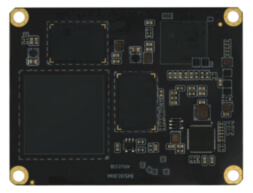
The AMP heterogeneous multicore capabilities of the DSOM-040R RK3588 system on module offer considerable advantages in industrial control applications, essential for handling high-power computational needs through the Master’s Linux system, such as video algorithms and local edge computing with an NPU. Industrial protocols with stringent rate and latency requirements (e.g., Ethercat, EIP, Profinet) are optimally managed by the Slave’s RTOS system. The tandem operation of these systems results in efficient performance.
By Xiang Wu – Dusun Product Team Director
Dusun IoT Embedded Heterogeneous Multicore Solution Recommendation
DSOM-040R RK3588 Heterogeneous Multicore System on Module
In previous discussions, we explored the inter-core communication principles and advantages of multicore heterogeneous applications in Dusun IoT’s DSOM-040R RK3588 system on module. Let’s delve deeper into its performance metrics.
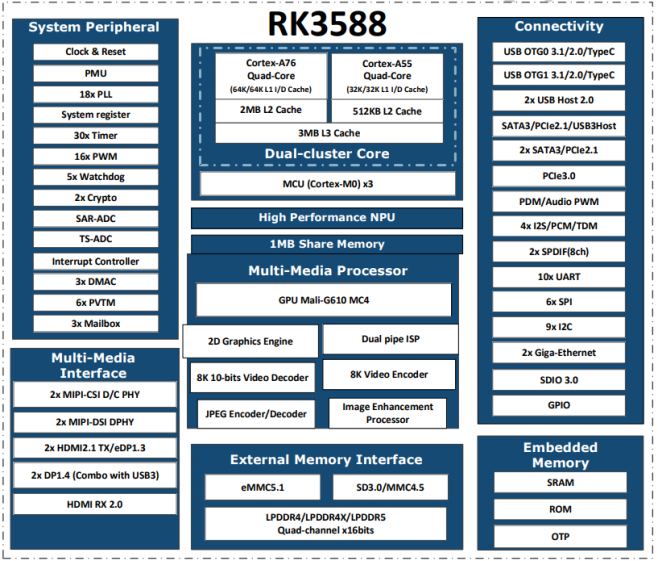
The DSOM-040R RK3588 system on module adopts ARM architecture, innovatively using an advanced 8nm process technology and featuring a combination of quad-core Cortex-A76 and quad-core Cortex-A55. The Cortex-A76 cores can reach speeds up to 2.4GHz, while the Cortex-A55 cores top out at 1.8GHz. Together with a dedicated NEON co-processor, the board delivers robust performance. It supports 8K ultra-high-definition displays and multi-screen configurations and is equipped with a suite of high-speed communication interfaces tailored for diverse industry needs. This setup boosts performance for high-end applications.
The DSOM-040R RK3588 system on module employs an AMP system architecture that combines Linux, RTOS, and Bare-metal operations. Certain cores run Linux while others operate under RTOS or with Bare-metal programming, ensuring complete isolation at the system scheduling level. This design gives several operational advantages:
- Native Preempt-RT support within the Linux kernel.
- Dynamic and flexible resource allocation.
- Microsecond-level response times for interrupts (<5us)
- Standard RPMsg protocol for efficient inter-core communication.
- Conforms with the stringent real-time and stability demands of industrial applications.
This strategic assignment ensures that cores dedicated to bare-metal programming handle time-critical tasks efficiently, ideal for sectors like power grid automation, power system safety management, and industrial automation.
Main Specifications of the DSOM-040R RK3588
| Item | Parameter |
| Soc | RockChip RK3588 |
| CPU | Eight core 64 bit (4 * Cortex-A76+4 * Cortex-A55), advanced 8nm technology, with a main frequency of up to 2.2GHz |
| GPU | ARM Mali-G610 MP4 quad core GPU, supports OpenGL ES3.2/OpenCL 2.2/Vulkan1.1, 450 GFLOPS |
| NPU | NPU has a computing power of up to 6 TOPS, supports INT4/INT8/INT16 mixed operations, and can achieve network model conversion based on TensorFlow/MXNet/PyTorch/Caffe and otherframeworks |
| ISP | Integrated 48MP ISP with HDR&3DNR |
| Encoding and decoding | Video decoding: 8K@60fps H. 265/VP9/AVS2 8K@30fps H. 264 AVC/MVC 4K@60fps AV1 1080P@60fps MPEG-2/-1/VC-1/VP8Video encoding: 8K@30fps Encoding, supports H.265/H.264 |
| RAM | 4GB/8GB/16GB 64bit LPDDR4/LPDDR4x |
| FLASHEthernet | 16GB/32GB/64GB/128GB eMMC |
| Integrated PCIe3.0/2 * GMAC/SDIO3.0/USB3.0, expandablemulti-gigabit Ethernet, WiFi6/Bluetooth, 5G/4G LTE | |
| Video output | 2 * HDMI2.1(8K@60fps or 4K@120fps Reused with eDP, 2 * MIPI-DSI(4K@60fps )2 * DP1.4 (8K@30fps Reusable with USB 3.0), 1 * BT.1120(1080P@60fps ) |
| Video input | 1 * HDMI-IN(4K@60fps ), supports HDCP 2.3, 2 * MIPI CSI (4 Lane), 4 * MIPI CSI (2 Lane), or 1 * MIPI CSI (4 Lane)+2 * MIPI CSI (2 Lane)2 * MIPI DC (4-channel DPHY v2.0 or 3-channel CPHY V1.1), 1 * DVP camera interface (up to 150MHz input data)Supports multi-channel 8K video output and 4K video input, with up to seven different displays |
| Audio | 2 * 8-channel I2S, 2 * 2-channel I2S, 2 * SPDIF, 2 * 8-channel PDM (supporting multiple MIC arrays), 1 * dual channel digital audio codec (16 bit DAC), 1 * VAD |
| PCIe | PCIe3.0(2*2lanes, 1*4lanes,4* 1lanes)、3* PCIE2.0(1lanes) |
| SATA | 3 * SATA3.0 |
| Watchdog | 1 * Independent watchdog |
| USB2.0 | 2 * USB2.0 Host, 2 * USB2.0 OTG |
| USB3.0 | 3 * USB3.1(Gen1) |
| UART | 10 * UART |
| I2C | 9 * I2C |
| SPI | 5 * SPI |
| ADC | 5 * ADC |
| PWM | 16 * PWM |
| SDIO | 1 * SDIO |
| OS | Supports Android 12.0, Ubuntu desktop and server versions, Debian11, and Buildroot; Supports RTLinux kernel |
The DSOM-040R RK3588 supports four major operating systems on core board: Android 12.0, Ubuntu (both desktop and server variants), Debian 11, and Buildroot. The board is backed by a robust RTLinux kernel, accompanied by extensive development resources and dedicated support from a professional FAE team.
DSOM-042R RK3588M Multicore Heterogeneous Automotive Grade System on Module
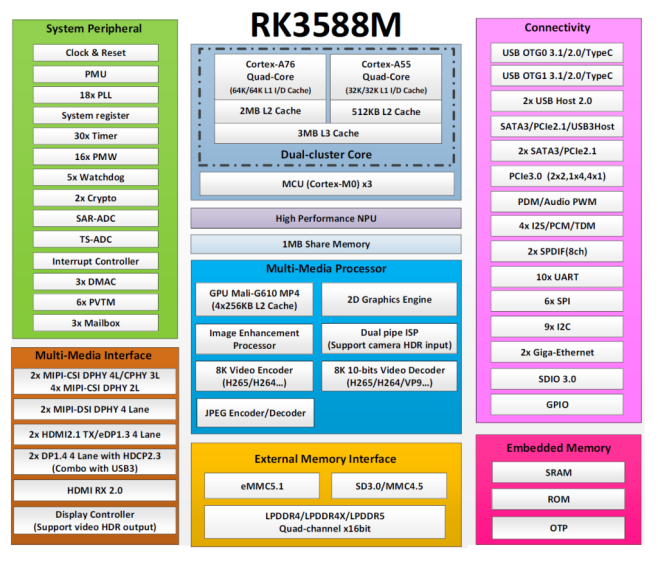
The DSOM-042R system on module, based on Rockchip’s flagship RK3588M smart cockpit chip, leverages a cutting-edge CPU+GPU+NPU architecture. This 8nm process chip includes quad-core ARM Cortex A76 and quad-core ARM Cortex A55 CPUs delivering up to 100KDMIPS, and a G610 MP4 GPU offering up to 512GFLOPS. It boasts a built-in 6TOPS power NPU that supports mixed quantization and multi-model parallel computing, matching the intelligent processing power of edge computing boxes. Its proprietary dual-channel ISP can process up to 16 million pixels and supports 8K video encoding and decoding. Additionally, the RK3588M can handle up to 16 channels of 1080P camera input, facilitating 360-degree panoramic processing to provide real-time feedback of the vehicle’s external environment to the driver.
A single RK3588M chip can simultaneously drive five in-car screens, including the dashboard, electronic rearview mirrors, and headrest screens, offering a high degree of integration to ensure a safe, reliable, and enjoyable smart driving experience.
Specifications of DSOM-042R RK3588M System on Module
| Item | Parameter |
| CPU | Octa-core 64-bit (4×Cortex-A76+4×Cortex-A55), 8nm advanced process, up to 2.4GHz |
| GPU | ARM Mali-G610 MP4 quad-core GPU supporting OpenGL ES3.2 / OpenCL 2.2 / Vulkan1.1, 450 GFLOPS |
| NPU | NPU algorithm up to 6 TOPS, support INT4/INT8/INT16 hybrid operations, can realize network model conversion based on TensorFlow / MXNet /PyTorch / Caffe and other series of frameworks |
| ISP | Integrated 48MP ISP with HDR&3DNR |
| RAM | 8GB |
| Storage | 128 GB |
| OS | Support for Android 11.0, Ubuntu 18.04 systems |
| Temperature | Operating Temperature: -40°C ~85 °C |
| Storage Temperature: -40°C ~105 °C | |
| Humidity | 10~80%(Non-condensing) |
| Barometric Pressure | 76Kpa ~106Kpa |
| Interface | Goldfinger (MXM3.0 314P standard interface), 0.5mm spacing, gold sinking process |
| Thermal Dissipation | Standby power consumption: 1.35W Typical power consumption: 4.8W |
| maximum power consumption: 20W | |
| Size | 66mm× 50mm x 5.8mm |
Currently, the DSOM-042R RK3588M system on module supports two major systems: Android 12 and Ubuntu 18.04, accompanied by comprehensive development resources and expert FAE team support.
Conclusion
This overview unpacks the sophisticated realm of multicore heterogeneous processors as represented by the RK3588 system on module series. Hope this facilitate a deeper understanding and offering solutions to challenges faced during development. The DSOM-04X series, using the multicore heterogeneous RK3588 solution, showcases impressive performance in domains such as industrial control and smart vehicles.
Dusun IoT’s RK3588 system on module series are employed in a variety of successful applications: from industrial control board for AI 3D mapping in real estate and education, to powerful cameras for facial recognition in public security, intelligent vehicle navigation systems and smart cockpit, and smart POS terminals, etc. Further more, based on the system on module, Dusun has released a IoT Gateway – DSGW-380 RK3588 Industrial AI Edge Computing Gateway.

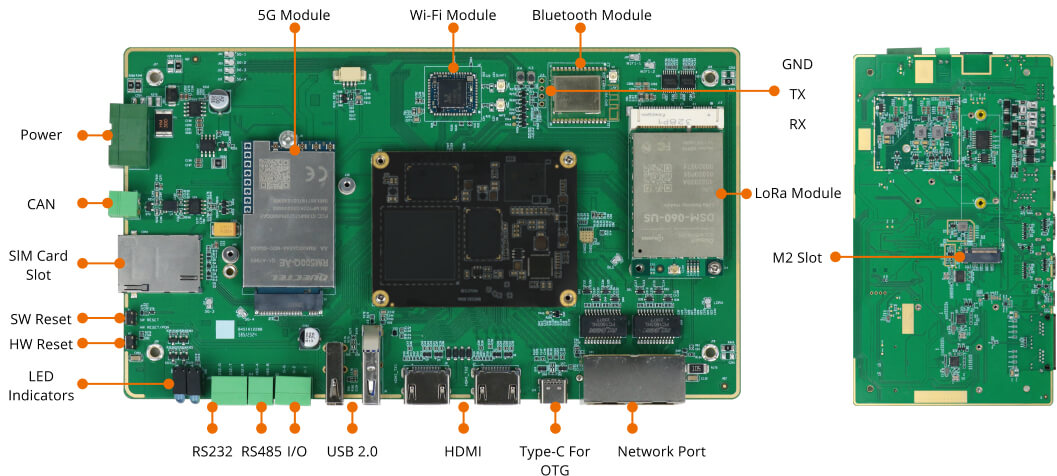

- Supports 5G, 4G LTE CAT4 and CAT1
- Supports Wi-Fi 6 (IEEE 802.11ax)
- Offers powerful computing performance, providing high-performance processing resources for AI edge computing
- Supports a variety of industrial real-time Ethernet and fieldbus protocols, making it compatible with a wide range of industrial equipment
- Supports a variety of deep learning framework software, including TensorFlow, MXNet, PyTorch, and Caffe
- Includes an acceleration SDK based on the open-source YOLOV3 algorithm, which provides a variety of API interfaces
- Supports IoT wireless protocols, including BLE 5.2 and LoRaWAN
- Featuring a fully industrial design, making it rugged and ready for harsh conditions
For further custom development services and user case applications, welcome to contact Dusun IoT. We are committed to providing professional services to ensure your product’s successful market launch and foster a prosperous future together!









